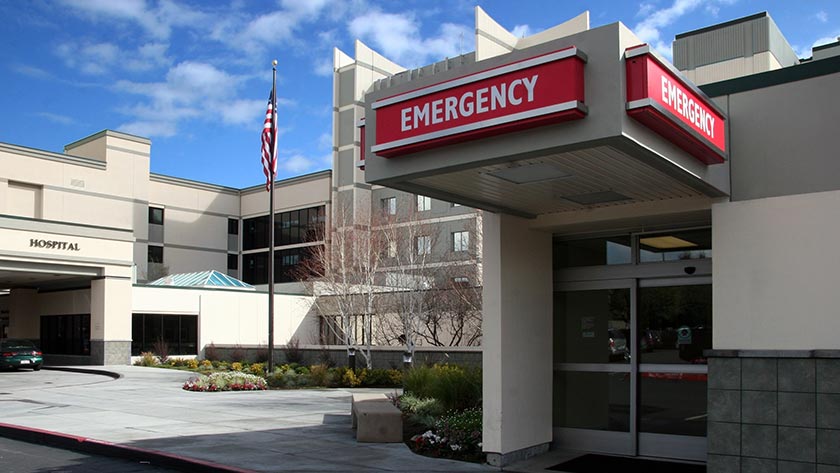At this point in a global pandemic, which has affected the entire world, infecting 219 million people, and taking the lives of 4.55 million, it’s hard to conceive of a greater threat to human health than COVID-19.
And yet, in the middle of increasing outbreaks caused by the new Delta variant, 230 health journals, including 15 nursing-specific journals, have released a rare joint open letter to call for urgent action to limit climate change.1 Indeed, they have gone as far as to say: “The greatest threat to global public health is the continued failure of world leaders to keep the global temperature rise below 1.5°C and to restore nature”. The letter also calls on health professionals to do our part: “As health professionals, we must do all we can to aid the transition to a sustainable, fairer, resilient, and healthier world.”
Health care has role to play
Indeed, our health-care systems, globally and here in Aotearoa New Zealand, have a major role to play in reducing carbon emissions that cause climate change.
In June of this year, OraTaiao: the New Zealand Climate and Health Council co-hosted the Sustainable Healthcare and Climate Health Conference in Wellington, with the theme “Re-thinking sustainable health in Aotearoa”.
As part of the conference, there were multiple presentations which highlighted the areas where our health-care system currently contributes to carbon emissions, changes that could be made to reduce these emissions, and the importance of addressing climate change to ensure equitable health outcomes.
The findings presented at this conference are significant to the nursing workforce. There were many types of interventions identified for which nurses are and can be the leaders of change to reduce carbon emissions.
The carbon emission profiles of district health boards (DHBs) across the country paint a somewhat concerning picture. Margriet Geesink presented to the conference on “district health board emission profiles and mitigation action”.2 This presentation provided insight into areas where DHBs can intervene to reduce emissions.
It was disappointing to learn a large portion of total DHB carbon emissions arise from just two DHBs using coal burners to heat their hospitals.
Beyond this, a large portion of carbon emissions across all DHBs come from the use of natural gas to heat hospitals, often while simultaneously running air conditioning units to cool these same buildings.
Need for change
This presents two major areas for change: one is retrofitting hospitals with energy-efficient heating systems, already under way in most areas; and secondly, ensuring that energy-efficient building approaches are used in all future infrastructure projects.
Other areas included staff flights, fleet vehicles using petrol, and patient travel.
Medical gases present an interesting challenge, as much has been done to reduce the worst offenders. But nitrous oxide used for pain relief is unfortunately also a potent climate change gas, and there is little that can be done to replace it or reduce the climate impact of its use.
No procurement measurement
Overall measurement means management, and only the areas that are measured can be addressed. Currently DHBs are not measuring the climate impacts of procurement (buying in goods and services). However, according to a presentation at the conference by Rick Lomax, procurement is likely the largest source of carbon emissions across the health sector.3
Lomax’s presentation took a detailed look at the climate change impacts of supply chain, highlighting that research on the United Kingdom’s National Health Service revealed 60 to 70 per cent of all carbon emissions from the health system arose from supply chain and procurement. He said this percentage was similar to recent yet unreleased audits of the Auckland DHB.

Procurement emissions incorporated those associated with production, transportation, use, and disposal of medical consumables and equipment. Lomax pointed out the feedback loop around climate change and procurement: as climate change affects health, more people will present with increasingly complex health issues, resulting in the need for increased procurement, resulting in increased carbon emissions and air pollution, leading to more people experiencing negative health impacts of climate change seeking health care.
Increasing investment in public health measures, such as healthy housing, could reduce demand on the health system by 30 per cent. Also, devising better treatment policies that take into account the carbon footprints of health-care pathways could further reduce procurement requirements by 30 per cent.
This highlights points through the health system where interventions can reduce emissions.
A simple example of clinical decisions which affect climate change that was brought up several times during the conference had to do with metred dose inhalers (MDI) for asthma treatment, primarily the use of salbutamol.
The propellant used in salbutamol MDIs is up to 3000 times more potent as a climate change gas than carbon dioxide.
Several presenters reiterated the fact that the propellant used in salbutamol MDIs is up to 3000 times more potent as a climate change gas than carbon dioxide.
This means a single MDI has an equivalent impact on the climate as a 300km journey in a standard petrol car.3, 4
The irony of a treatment for asthma also containing a propellant which contributes to an environmental trigger for asthma was not lost on many in attendance.

The point is not to shame or stigmatise individual use of an MDI, but to highlight a clinical practice area which has good alternatives available. In fact, the recent change to the Global Initiative for Asthma (GINA) guidelines has recommended that best practice for first line treatment of asthma is to move towards a dry-powder inhaler, which requires no propellants, with combined long-acting beta-agonist and inhaled corticosteroid, such as Symbicort.5
This highlights an important area where a change to clinical best practice overlaps with climate change best practice.
This is a brief overview of a small selection of presentations from the Sustainable Healthcare and Climate Health conference. If you’re interested in listening yourself, most are currently available online.
A challenge for us as health professionals and NZNO as our union is embedding awareness of climate change in every area.
The main points that relate to NZNO are that climate change is the greatest known threat to human health we’ve yet encountered, yet our health-care systems contribute to carbon emissions in many avoidable ways. A challenge for us as health professionals and NZNO as our union is embedding awareness of climate change into every area of the health system.
Incorporating climate change-informed decision-making into each college and group of NZNO’s professional arm, and ensuring action on climate change is part of NZNO’s industrial relations efforts is one major way, as a union, we can do our part to address this looming threat.
I would like to plant the seeds here for climate change leadership roles to be implemented through every layer of our organisation to ensure this remains an issue that informs our decisions and actions as a union.

Visit the OraTaiao website for more information, or to become a member of OraTaiao.
Mikey Brenndorfer, RN, is a youth health nurse specialist and school-based health services nurse educator.
References
- Atwoli, L., Baqui, A.H., Benfield, T., Bosurgi, R., Godlee, F., Hancocks, S., Horton, R., Laybourn-Langton, L., Monteiro, C.A., Norman, I., Patrick, K., Praities, N., Rikkert, M.G.M.O., Rubin, E.J., Sahni, P., Smith, R., Talley, N.J., Turale, S., & Vazquez, D. (2021). Call for emergency action to limit global temperature increases, restore biodiversity, and protect health. BMJ, 374(1734), 1-3. doi.org/10.1136/bmj.n1734
- Geesink, M. (2021, June 22-23). District Health Board emission profiles and mitigation action (video). 2021 Sustainable Healthcare and Climate Health Conference Aotearoa, Wellington, New Zealand.
- Lomax, R. (2021, June 22-23). Supply chain emissions are someone else’s problem, right? (video) 2021 Sustainable Healthcare and Climate Health Conference Aotearoa, Wellington, New Zealand.
- Coffey, D. (2021, June 22-23). Vision from General Practice (video). 2021 Sustainable Healthcare and Climate Health Conference Aotearoa, Wellington, New Zealand.
- Global Initiative for Asthma (GINA). (2021). Global Strategy for Asthma Management and Prevention, 2021 (PDF, 8.31 MB).




